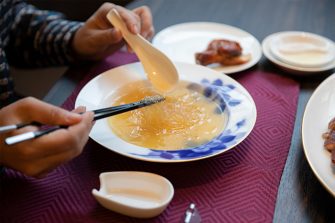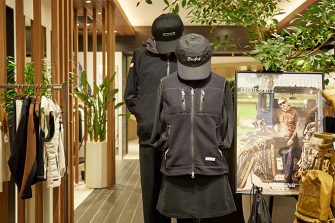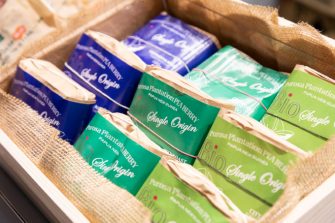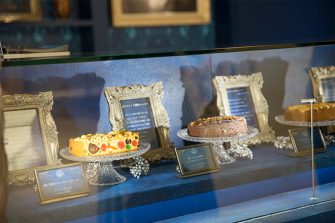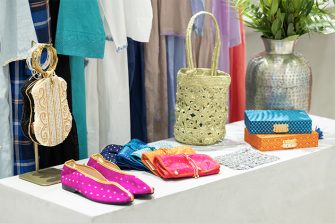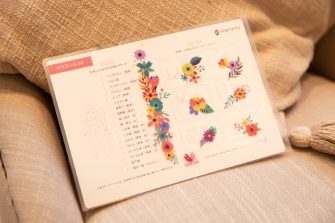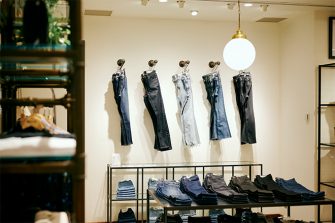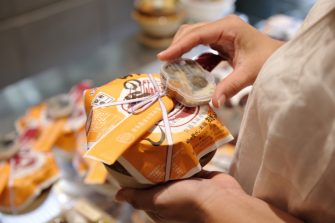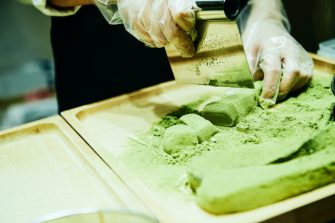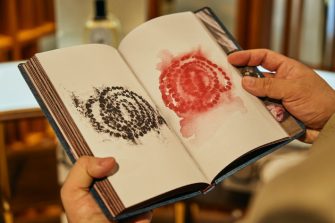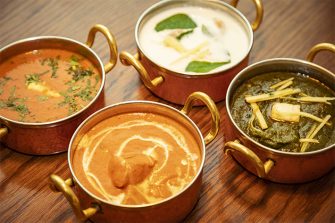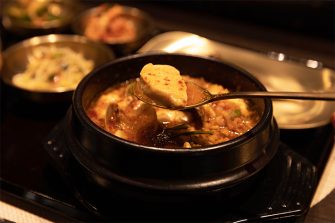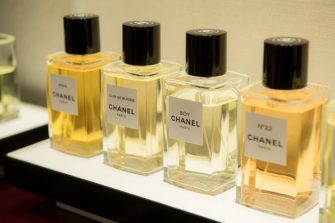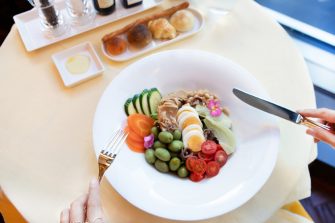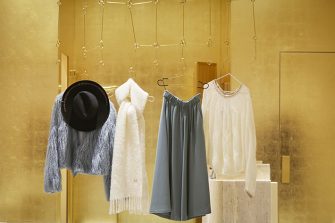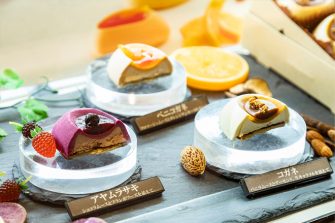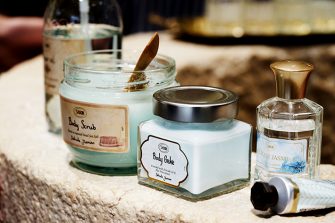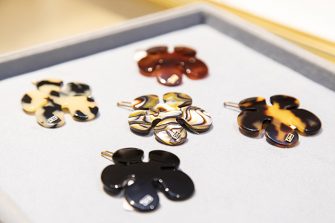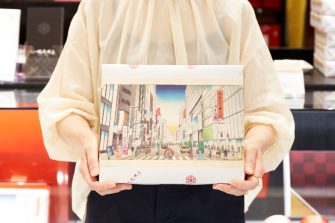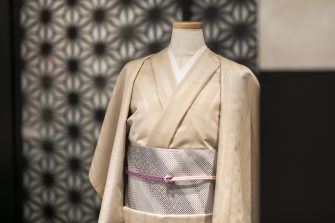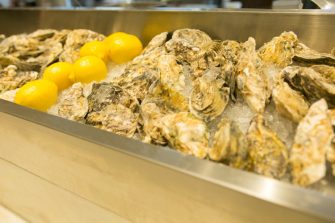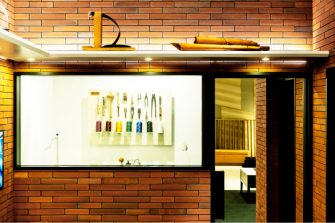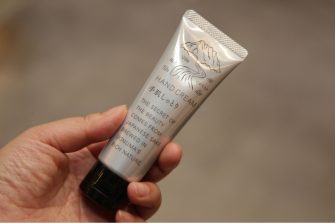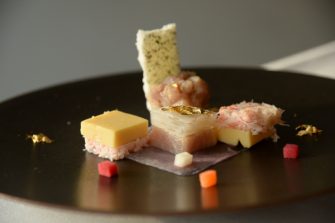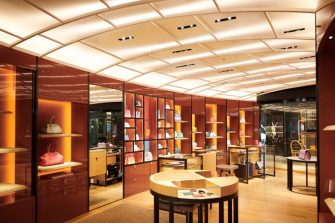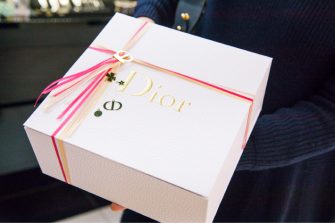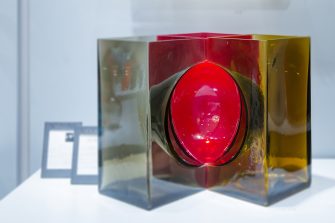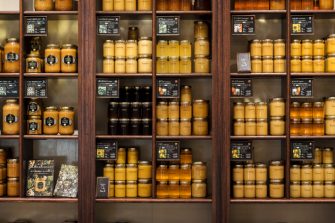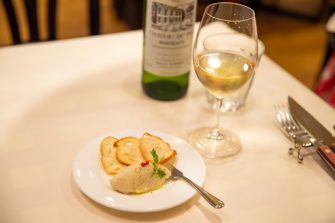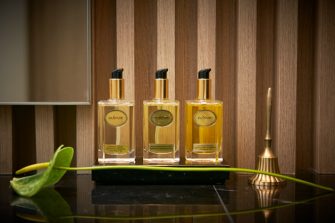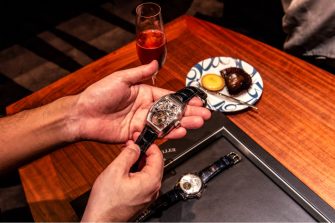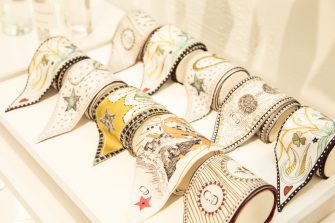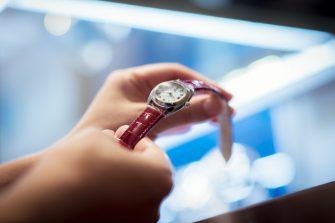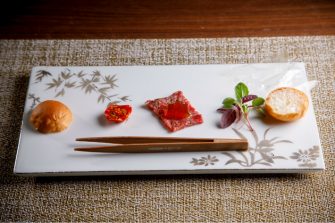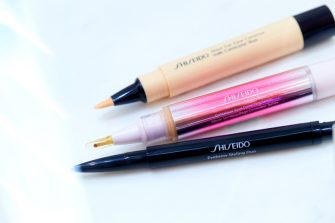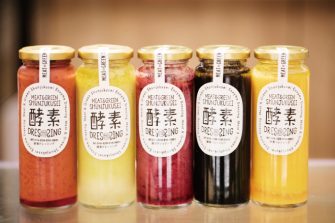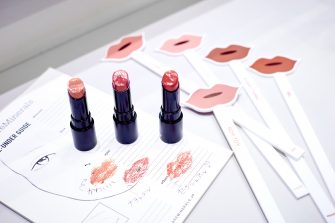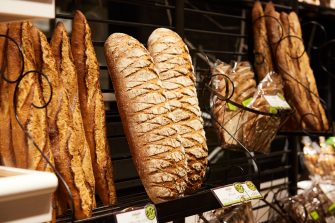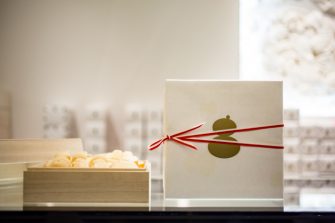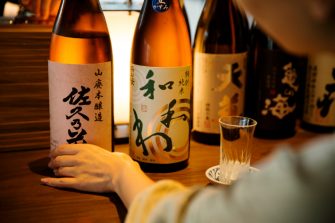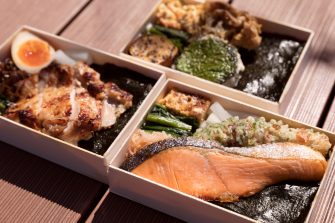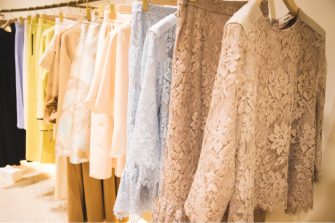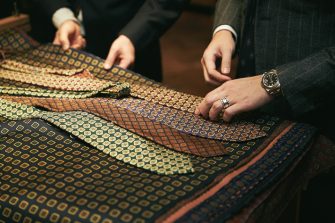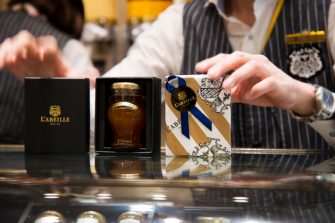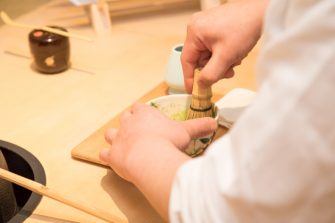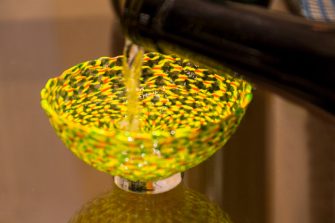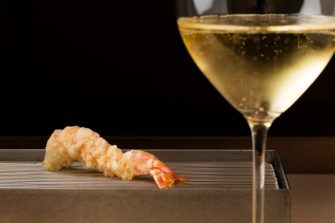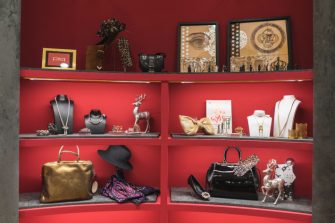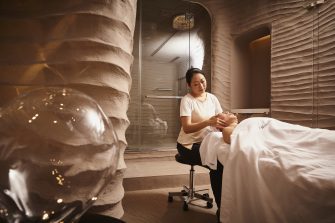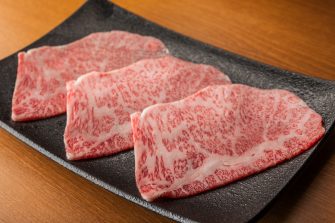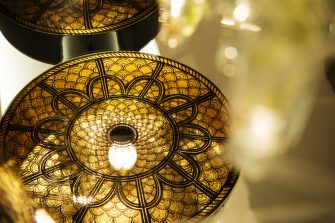

GINZA SIX EDITORS
ファッション、ジュエリー&ウォッチ、ライフスタイル、ビューティ、フード…
各ジャンルに精通する個性豊かなエディターたちが、GINZA SIXをぶらぶらと
歩いて見つけた楽しみ方を綴ります。
GINZA SIX はしご酒 Barhopping at GINZA SIX
マッキー牧元
GINZA SIX EDITORS Vol.23(Food)
「これは、はしごのしがいがあるぞ」。GINZA SIXに初めて訪れたとき、そう閃いた。
早速計画を立てて、食いしん坊仲間の亮介と絵里子、詩織を誘った。銀ブラならぬ「銀ハシゴ」である。「面白そう」と、計画に乗った3人だったが、GINZA SIXの前で、少し面食らっている。
「さあ、今日の予算は1万円。だから、みんな1万円ずつ出して。僕が管理するから」。はたしてこれだけで、どこまではしご酒が出来るのだろう? GINZA SIXだぞ。
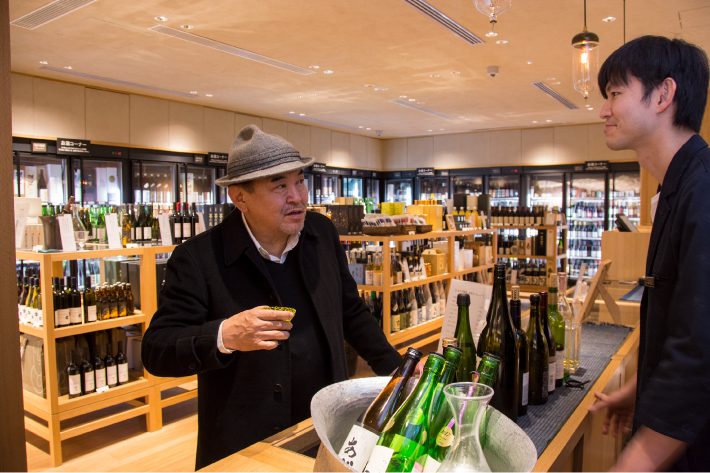
まず連れて行ったのは地下2階である。酒屋「いまでや」一画にある立ち飲みコーナーには、数種類の日本酒やワインが用意されて、日によって一杯400〜500円から飲めるようになっている。
「ここで食前酒といってみよう」。店長の説明を聞きながら選ぶのだが、コメントがいい。的確で分かりやすく、すべて飲みたくなってしまう。おすすめに従って選んだのは、僕が「山形正宗」純米吟醸の斗瓶囲い、亮介が「飛露喜」の純米大吟醸、絵里子が「丹波ワイン」ソーヴィニヨン。詩織が「フェルミエのシュワシュワ」というスパークリングワインだった。
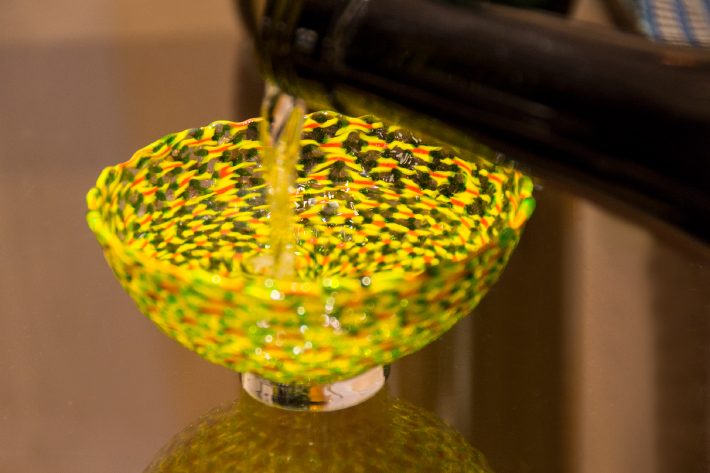
「山形正宗」は、きれいな切れがありながら膨らみがある。「飛露喜」は吟醸香がしつこくなく、「丹波ワイン」は和食に寄り添う品がある。「フェルミエのシュワシュワ」は味わいの優しさが体に染み入っていく。それぞれを回し飲みしながら、盛り上がってきた頃合で、「よしもう一軒」」と声をかける。
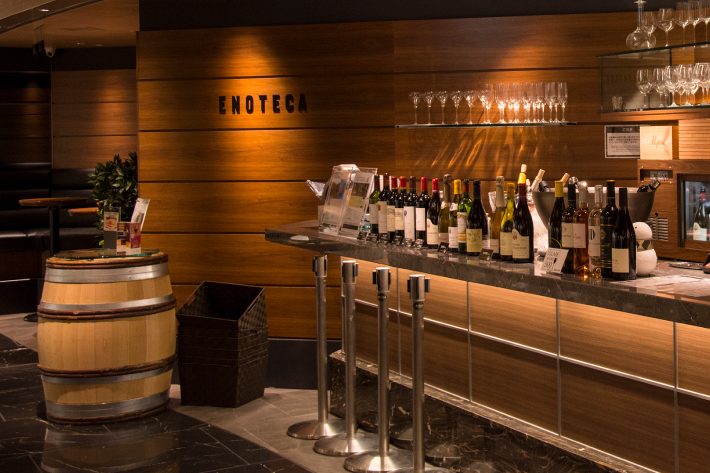
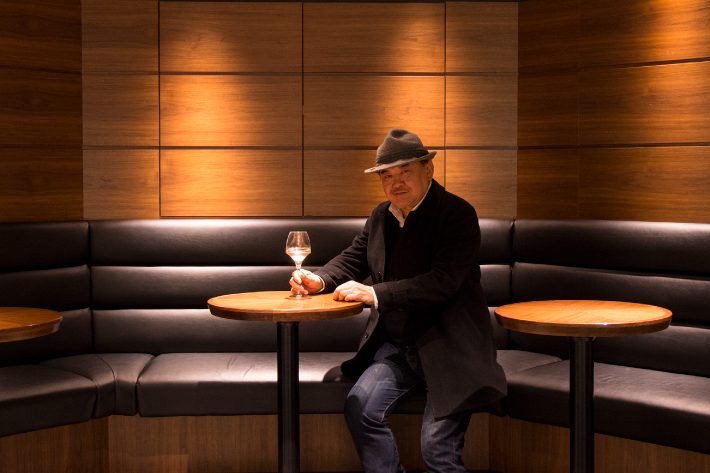
今度は「ワインショップ・エノテカ」である。こちらは「銀ロゼ」と名付けて力を入れているロゼワインが、一杯500円から飲める。白桃やライチなどが香るすっきりとした辛口ロゼが、食欲をくすぐる。さあ、いよいよ戦闘開始である。今度は6階 「銀座大食堂」へと向かう。
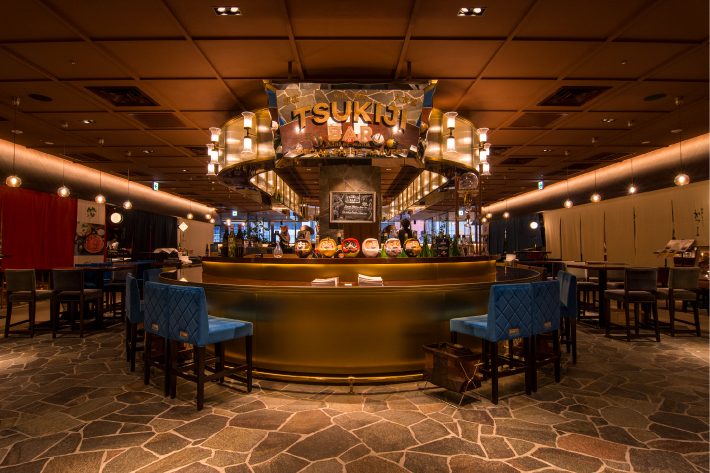
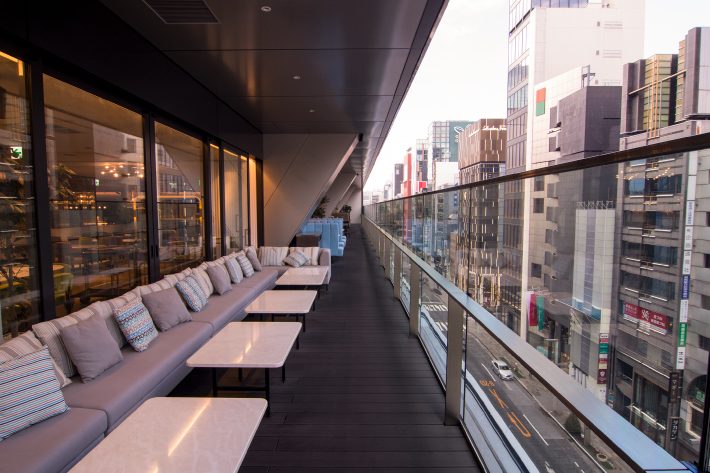
ずらりと並んだ様々なジャンルのレストランから、好みの料理をとって、宴会を企てるのである。席は、中央通りを見下ろすテラス席を選んだ。眼下に銀座の街並みを見下ろしながらの食事は、大銀座を制したようなゼータクな気分がある。
まず前菜に選んだのは、山田チカラ氏監修のバルから「セビーチェクラシック(¥1,700)」(以下全て税抜価格)と「雲丹とお出汁のフラン(¥800)」、「マグロとろたく アボカドエスプーマ(¥500)」。
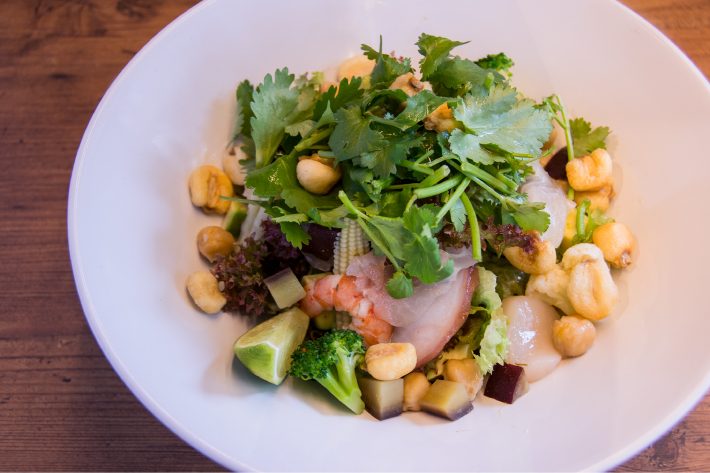

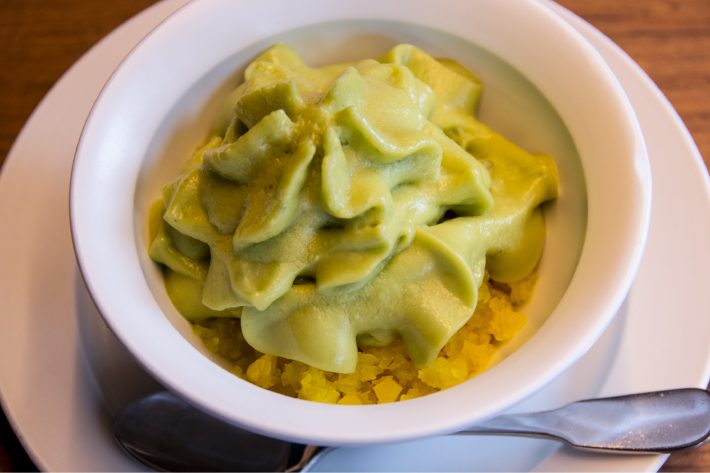
お寿司屋からは「京豆腐 七味薬味(¥600)」。
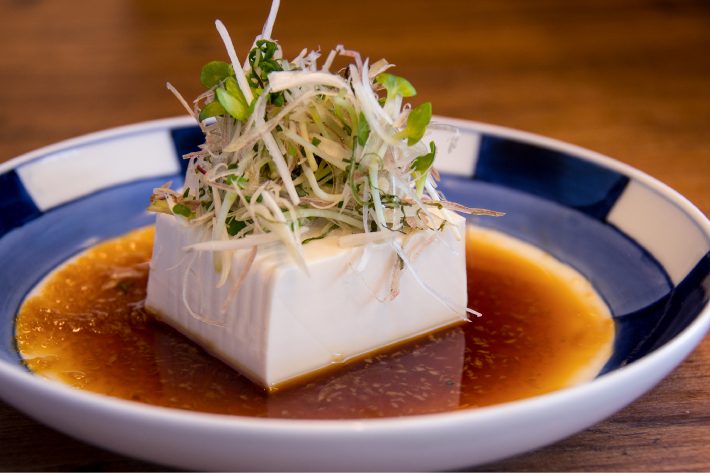
中国料理店から「蒸し鶏と北京ダックの棒棒鶏(¥950)」、「四川風麻婆冷奴(¥680)」といってみた。
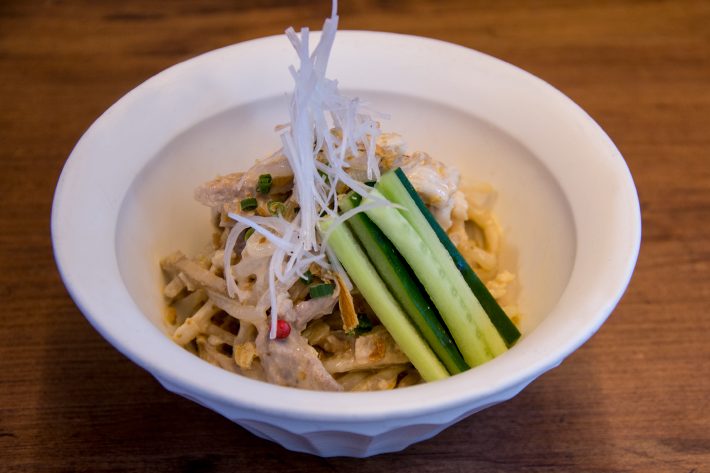
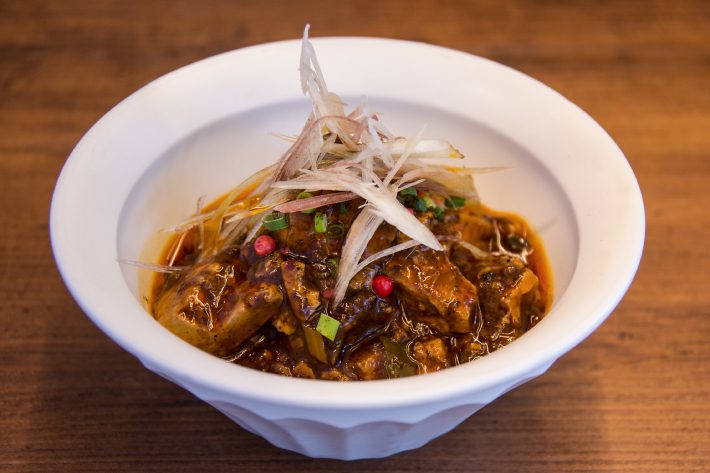
一方で酒は、いかなる状況にも対応できるよう、白ワインに日本酒、麦焼酎と頼み、万全である。
次々と料理が運ばれてきた。ハハハ。楽しいぞ。セビーチェは、下に注がれたマリネ液の通称「虎のミルク」を、各魚貝類にたっぷりとからませると、その酸味と辛味が食欲を刺激する。フランは、ウニと玉子の甘みが抱き合ったうまみの品の良さが、宴の開始を滑らかにする。これらは白ワインだな。
マグロトロたくは、初めて見るお姿だが、アボカドのコクとトロの脂の香り、タクワンの食感が次々と口の中を通過して、実に楽しい。これと浸し汁にほんのり辛味を効かせた京豆腐は、日本酒だな。
棒棒鶏は、北京ダックが入って、通常のそれとは違う噛み締めがいあり、麻婆冷奴は、なんと冷たい麻婆豆腐である。しかし冷たいながら、油っこくなく、辛味と山椒の香りがきっちりと立って、舌をキックしながら鼻孔と胃袋をくすぐる。いいぞ、これらは麦焼酎で迎え討とう。
早くも6皿だけで盛り上がってきた。お次は温かい皿である。「黒酢とバルサミコの黒胡麻酢豚(¥1,480)」、「黒毛和牛ロース昆布〆炙りたたき(¥1,800)」、「河豚唐揚(¥1,800)」、さらに「だし巻きとハムのサンドイッチ&ソーセージココットプレート(¥1,800)」といってみた。
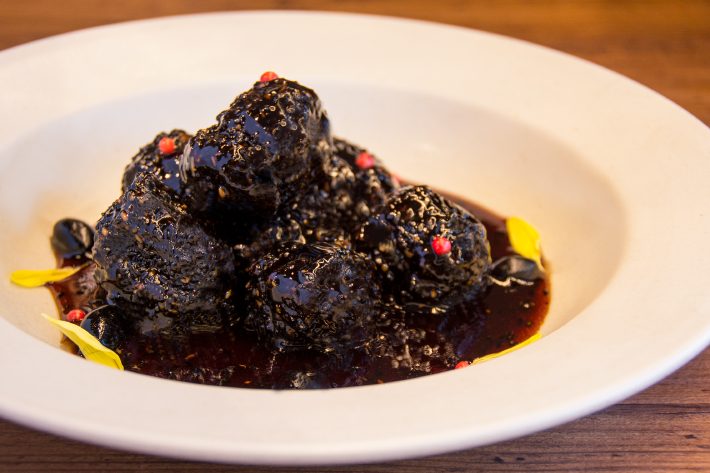
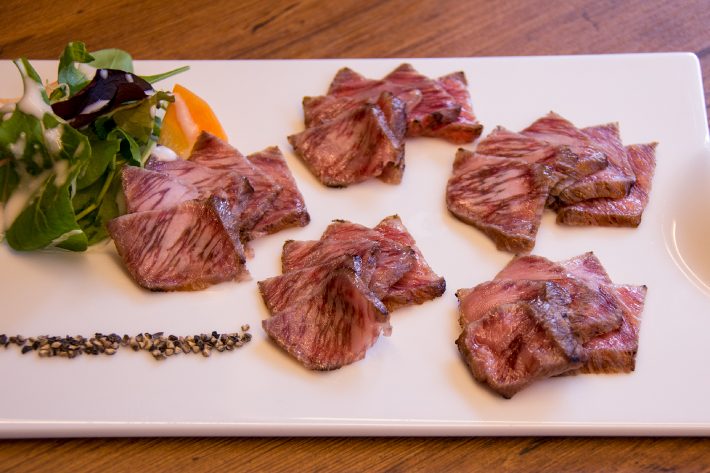
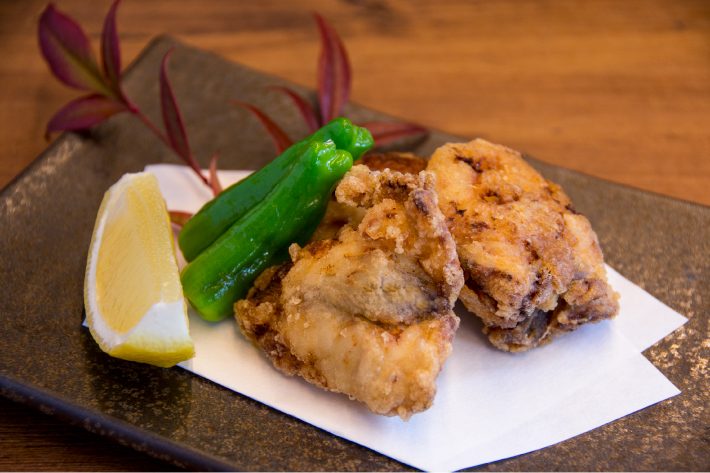
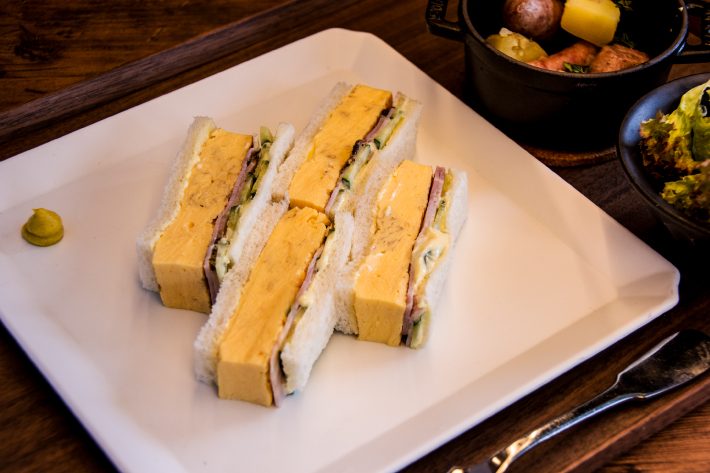
ここで赤ワインも頼み、酢豚や和牛ロースに合わせてみる。酢豚は、黒酢のコクにバルサミコのフルーティーな香りが加わって、赤ワインが進む。和牛ロースは脂の香りが甘く、白ワインでもいいかな。サンドイッチは後回しにし、添えられたソーセージで、麦焼酎を飲む。こうして運ばれる料理を、様々な酒と合わせて、相性を確かめながら食べ進むのも、なんとも楽しいじゃないか。
河豚唐揚は、香ばしい衣に歯を立てれば、うま味に満ちた身が弾けるが、問題があった。3切れなのである。これはジャンケンである。ジャンケンで順番を決め、順位を決定する。4番目になった人は、ふぐは食べることはできない。しかしシメに頼む、握り盛り合わせで、一番先にどれを選ぶかという権利を得る次第である。
様々な料理を頼むだけでなく、こうした遊びもまたいい。さてそろそろシメである。先ほどの、出汁の旨みが染み込んだ卵焼きに思わず顔がくずれる、だし巻きハムサンドイッチの他に12貫の握り、そしてフカヒレ麺と頼んでみた。仲良くシェアしながらうたげを締める。そうそう、フカヒレ麺に乗せられた白木耳は、美容に効くから、女性にあげるようにね。
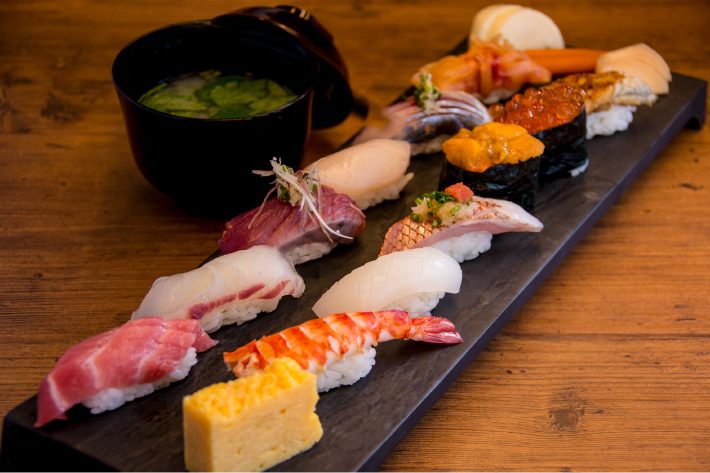
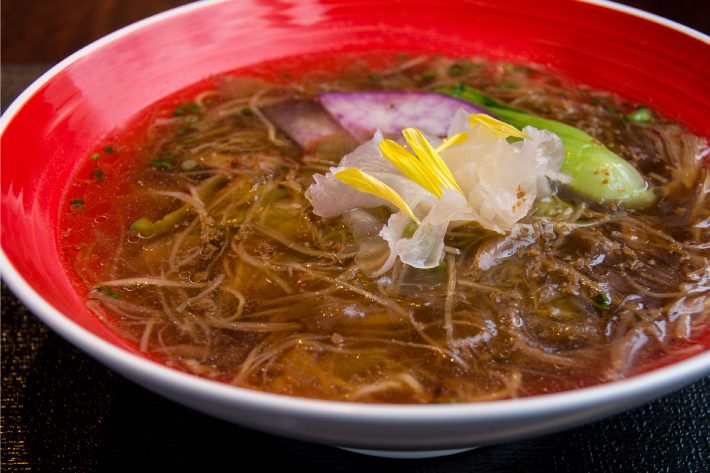
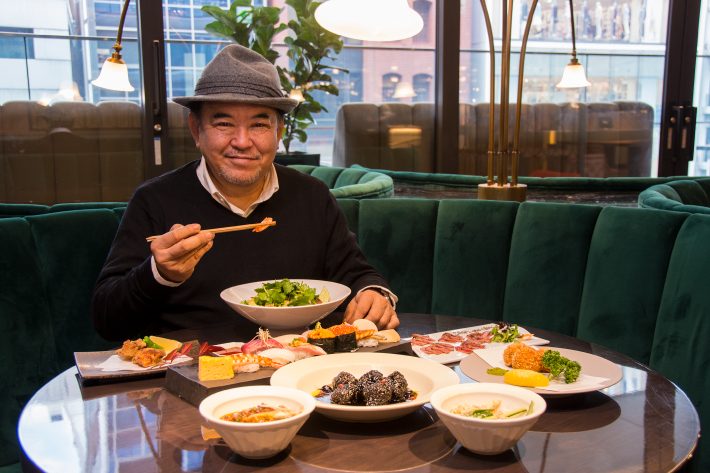
これだけ頼み、満腹、ホロ酔い気分、大銀座を制圧しながら、一人一万円でお釣りがくる。これはクセになりそうだが、まだ終わっていない。デザートである。
再び地下2階に舞い戻り、「PHILIPPE CONTICINI」を目指す。カウンター仕立てのスイーツバーで作りたてのオリジナルパフェで有終の美を飾ろうという算段である。選んだのは、ルバーブや苺、ピスタチオクリームやショコラなど18種類が組み合わされた「ヴェリーヌパフェ」(¥2,000)である。
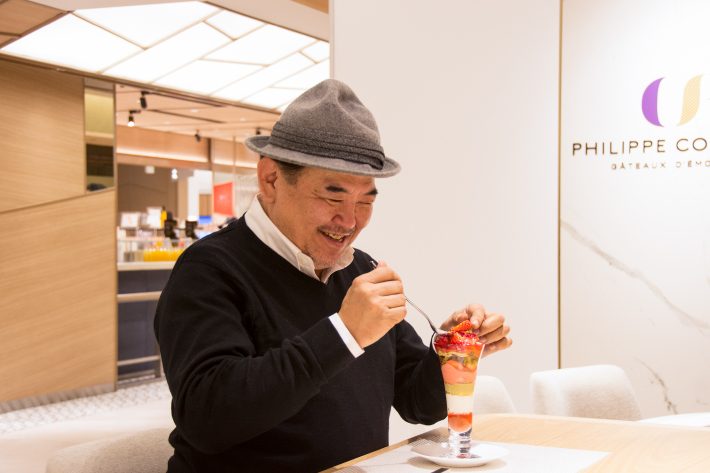
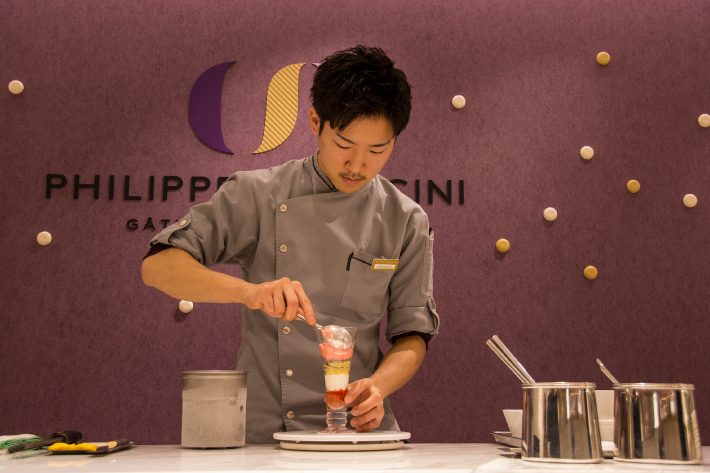
多くの香りや酸味、異なる甘みや食感が巧みに共鳴する。いやそれだけではない。
プレリュードからクライマックス、そしてコーダに至る楽曲のようなドラマがある。食前酒から始まった、今夜の「ギンザシックスはしご酒」とも重なるような、パフェが届ける夢の時間に酔う。他の3人も食べながら無言となって、夜のひと時を楽しんでいる。
よし今度は休日に、昼のはしご酒を企ててみるかな。
Text:Macky Makimoto Photos:Takashi Kaizuka Edit:Yuka Okada
Barhopping here would be something—that’s what occurred to me the first time I visited GINZA SIX.
So, I quickly drew up a plan and invited fellow food-and-drink lovers Ryosuke, Eriko, and Shiori. Ginza barhopping without strolling the Ginza streets… sounds like fun, they said, and agreed to join in. Some confusion, however, ensued in front of GINZA SIX.
“OK, everyone. We’re doing this today on a budget of 10,000 yen for each of us. You are giving me 10,000 yen, and I’ll keep track of everything.” How in the world can you barhop on a budget like that in Ginza? At GINZA SIX, of course.

I take them to the second belowground floor, to a stand-and-drink bar in one corner of Imadeya, a liquor store, where you can try several varieties of sake and wine, all starting at 400 or 500 yen a glass (all prices given are before tax).
“Let’s go with an aperitif.” You choose based on what the store manager happens to say. His remarks turn out to be really intriguing. They’re clear, easy to understand, and make you want to try what he’s talking about. Based on the recommendations, I go with the Yamagata Masamune Junmai Ginjo (ginjo sake with no added alcohol) by tobin kakoi (naturally filtered in a large glass flask). Ryosuke has the Hiroki Junmai Daiginjo (daiginjo sake with no added alcohol), while Eriko has a glass of sauvignon from Tamba Wine. Shiori opts for a sparkling wine called Fermier no Shuwa-Shuwa.

The Yamagata Masamune has a distinct but mellow flavor. The Hiroki offers up subdued ginjo aromas. The Tamba Wine matches well with Japanese food. The gentle flavor of the Fermier no Shuwa-Shuwa seeps into one’s body. Things begin to get lively as we take turns drinking. Ultimately, I give the signal to head to the next place.
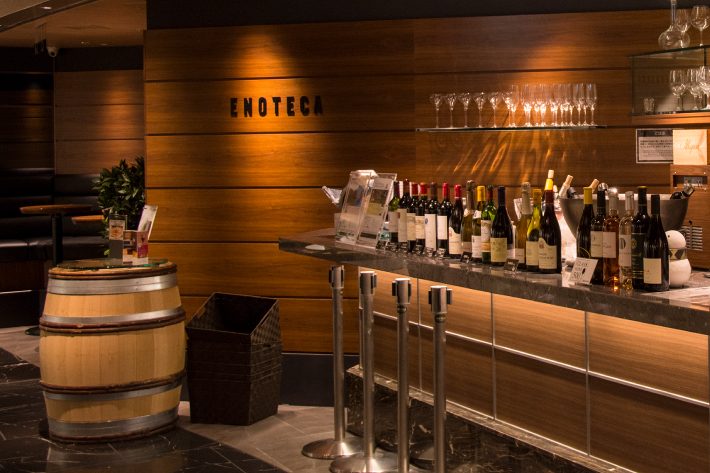

Next up is the Enoteca wine shop. Here you can try a rosé, touted as the Ginza Rosé, starting at 500 yen a glass. Sips of a dry refreshing rosé with a distinct nose of peach or lychee whet the appetite, and that, naturally, turns the page to the next chapter. We head to the Ginza Grand Premium Food Hall on the sixth floor.


Here you can plan a feast based on favorite dishes from several different restaurants, all located here elbow to elbow. I choose the terrace seating with a view down Chuo-dori avenue. Eating while gazing over the Ginza streetscape confers a sense of luxury and prominence, a sense of commanding the renowned district of Ginza.
For appetizers, from a bar produced by Chikara Yamada, I choose the Ceviche Classic (1,700 yen), Sea Urchin and Dashi Flan (800 yen), and Maguro Torotaku Avocado Espuma (500 yen).



From the sushi place, I order the Kyotofu Shichimi-Yakumi (600 yen).

From a Chinese restaurant, I go with Steamed Chicken and Peking Duck Bang Bang Chicken (950 yen) and Sichuan Mabo Hiyayakko (680 yen).


For drinks, I find that I want something for each occasion, and so I order white wine, sake, and barley shochu—perfection indeed.
The dishes come one after the other. Wow! All of this is indisputably fabulous! With the ceviche, mingling the seafood with the marinade placed under (nicknamed “milk of the tiger”) produces the robust acidic and spicy flavors, making one’s mouth water. With the flan, refined umami flavors and the intertwined sweetness of sea urchin and egg get the feast off to a propitious start. The proper and companionable beverage here is a white wine.
The Maguro Torotaku assumes a form I’ve never seen before. The richness of avocado, the fatty aroma of the tuna, and the texture of the takuwan (pickled daikon radish) all visit one’s palate. Remarkably enjoyable. For this and the kyotofu, which brings out a subtle sharpness in the marinade, the drink has to be sake.
The Bang Bang Chicken actually features Peking duck, creating unexpected textures. The Mabo Hiyayakko is an intriguing cold version of mabo dofu. It’s cold, so not greasy. Plus, the spiciness and sansho pepper aromas really stand out and stimulate the palate while stirring the nostrils and stomach. All of this is wonderful. And the barley shochu is perfect.
Just these six dishes have created quite the stir among our circle. Next up are several warm dishes. I go with the Black Vinegar and Balsamic Black Sesame Sweet-and-Sour Pork (1,480 yen), Lightly Broiled Kobujime Japanese Black Loin (1,800 yen), Deep-Fried Puffer Fish (1,800 yen), and Dashimaki Omelet and Ham Sandwich & Sausage Cocotte Plate (1,800 yen).




At this point, I order red wine, pairing it with the Sweet-and-Sour Pork and Japanese Black Loin. The red wine accentuates the pork, which itself adds a fruity balsamic aroma to the richness of black vinegar. The Japanese beef has a sweet, fatty aroma, which helps it go perfectly with white wine, too. We leave the sandwiches for later and drink the barley shochu with the sausages served alongside. It’s undeniably great fun to try the food brought out to you while looking for affinities with various drinks.
With the Deep-Fried Puffer Fish, we bite into an aromatic and crisp coating to part the flavorful flesh. But there’s a problem: only three pieces are provided. The situation calls for an impromptu rock-paper-scissors tournament to decide order and precedence. The individual placing fourth draws the short straw and misses out on the puffer fish. As an offset, that person gets first choice from the sushi plate I order to finish things off.
Our competition adds to the fun of ordering and experiencing all these different dishes. OK, now we’re to our final dishes. There’s the dashimaki omelet and ham sandwich—the rolled egg steeped in dashi stock with rich umami flavors is a bewitching sensation—plus the 12-piece sushi plate. I’ve also ordered shark fin noodles. We end our feast sharing this in the best of good spirits. The snow fungus on the shark fin noodles confers beauty benefits, so perhaps it’s best to leave this for the ladies in the group.



After all this food and drink, we find our tasting tour of Ginza Grand has left us full and a little tipsy—and with change left over from our per-head budget of 10,000 yen. This could well be habit-forming. But—wait—we’re not done! There’s still dessert.
We skip back down to the second belowground floor and head to PHILIPPE CONTICINI. The plan is to add a crowning glory to our outing with an original parfait freshly made at the counter-style sweets bar. I choose the Verinne Parfait (2,000 yen), composed of 18 ingredients, including rhubarb, strawberries, pistachio cream, and chocolate.


The many aromas, sour flavors, sweet tastes, and textures merge in exquisite harmony. But that’s not all. There is drama, as with a musical composition, from prelude to climax to coda. I’m intoxicated by visions embodied in and inspired by this parfait, which begin to mingle with the night’s GINZA SIX barhop, all of which began with a simple aperitif. My three companions fall silent and enthralled as we eat and enjoy a few moments of this evening.
All right, then; next time I’ll organize an afternoon barhop for the weekend.
Text:Macky Makimoto Photos:Takashi Kaizuka Edit:Yuka Okada
マッキー牧元
1955年東京生まれ。株式会社味の手帖 取締役編集顧問、タベアルキスト。立ち食いそばから割烹、フレンチからエスニック、スィーツから居酒屋まで、年間600回外食をし、料理評論、紀行、雑誌寄稿、ラジオ・テレビ出演と多彩に活躍。『味の手帖』『料理王国』『食楽』他、連載多数。鍋奉行協会会長。著書に「東京 食のお作法」(文芸春秋)、「出世酒場」(集英社)ほか。


